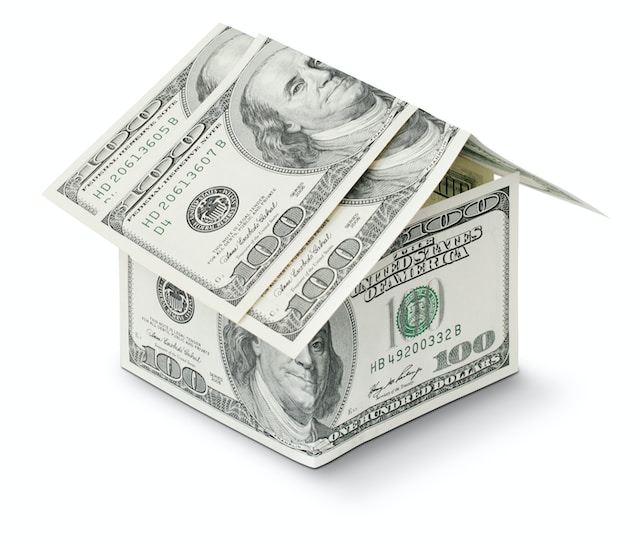
Federal Reserve to keep interest rates near zero, signaling concern over mounting US debt
In March 2021, The New York Times reported that the Federal Reserve has decided to keep interest rates near zero, signaling concerns over mounting US debt. The announcement came as the country continued to grapple with the economic fallout of the COVID-19 pandemic, and the decision by the Federal Reserve was widely expected by analysts and investors.
This move by the Federal Reserve has far-reaching implications for the US economy and financial markets, and it is important to understand why the central bank has taken this decision and what it means for the future.
The Federal Reserve is the central bank of the United States and is responsible for setting monetary policy to achieve its dual mandate of maximum employment and price stability. One of the main tools it uses to achieve this is setting the federal funds rate, which is the interest rate at which banks lend money to each other overnight. When the Federal Reserve lowers the federal funds rate, it encourages banks to lend more money to businesses and individuals, which in turn can boost economic activity and create jobs. Conversely, when the Federal Reserve raises the federal funds rate, it can slow down economic growth and curb inflation.
The decision to keep interest rates near zero is significant because it suggests that the Federal Reserve is prioritizing the goal of maximum employment over concerns about inflation. Historically, the central bank has been more cautious about inflation, and has often raised interest rates to prevent it from spiraling out of control. However, in recent years, inflation has remained stubbornly low despite a strong labor market, and the Federal Reserve has been criticized for being too quick to raise interest rates in the past.
The COVID-19 pandemic has only heightened these concerns. As businesses were forced to close and millions of Americans lost their jobs, the Federal Reserve responded by cutting interest rates to near zero and launching a massive program of asset purchases known as quantitative easing. These measures were designed to provide liquidity to financial markets and support the economy during a time of extreme stress.
However, as the economy has begun to recover, the Federal Reserve is faced with a delicate balancing act. On the one hand, it wants to continue supporting the economic recovery and ensuring that as many Americans as possible can find work. On the other hand, it must be mindful of the risk that inflation could rise as the economy heats up, fueled by government spending and loose monetary policy.
One of the key concerns for the Federal Reserve is the level of US government debt. As of March 2021, the US national debt stood at over $28 trillion, or around 130% of GDP. This is a record high, and some economists worry that it could eventually lead to a debt crisis if interest rates were to rise sharply. The Federal Reserve is acutely aware of this risk and has signaled that it will keep interest rates low for the foreseeable future in order to keep borrowing costs down for the government.
In addition to concerns about inflation and government debt, the Federal Reserve is also grappling with a number of other challenges. One of these is the risk of financial instability caused by low interest rates and loose monetary policy. When interest rates are low, investors are often willing to take on more risk in order to earn a return on their money. This can lead to asset bubbles and excessive speculation, as we have seen in recent years with the rapid rise of cryptocurrencies and meme stocks.
Another challenge facing the Federal Reserve is the growing income inequality in the United States. While the stock market has soared to record highs in recent months, many Americans are still struggling to make ends meet, particularly those in low-wage jobs or who have lost work due to the pandemic. The Federal Reserve has limited tools to address this issue directly, but it can help to support the economy more broadly by keeping interest rates low and encouraging economic growth.
Despite these challenges, the Federal Reserve remains committed to its dual mandate of maximizing employment and maintaining price stability. However, the COVID-19 pandemic has brought new challenges and uncertainties to the economic landscape, which the central bank is carefully monitoring.
The decision to keep interest rates near zero is not without risks, however. One potential downside is that it could encourage excessive risk-taking and speculative behavior in financial markets, which could ultimately lead to a crash. In addition, keeping interest rates low for an extended period of time could lead to inflationary pressures as the economy heats up, which could undermine the purchasing power of the dollar and hurt consumers.
To mitigate these risks, the Federal Reserve has indicated that it will continue to monitor economic data closely and adjust its policies as needed. In particular, it has signaled that it will be more patient when it comes to raising interest rates in the future, and will not be quick to tighten monetary policy unless inflationary pressures become more pronounced.
The decision by the Federal Reserve to keep interest rates near zero has important implications for investors and businesses. With interest rates expected to remain low for the foreseeable future, it may be more difficult for savers to earn a decent return on their money. On the other hand, businesses and individuals that rely on borrowing may benefit from lower interest rates, which could make it easier to finance new projects or purchases.
In addition, the decision to keep interest rates low could have important political implications. With the US national debt at record highs, some politicians have called for the Federal Reserve to keep interest rates low in order to keep borrowing costs down for the government. However, others have warned that this could lead to a debt crisis down the line if interest rates were to rise sharply.
Overall, the decision by the Federal Reserve to keep interest rates near zero is a reflection of the delicate balancing act that the central bank must maintain as it tries to support the economic recovery while also guarding against inflation and financial instability. While there are risks associated with this approach, the Federal Reserve believes that it is the best course of action for the time being. As the economic situation evolves, the central bank will continue to monitor data closely and adjust its policies as needed to ensure that the US economy remains on a stable footing.

